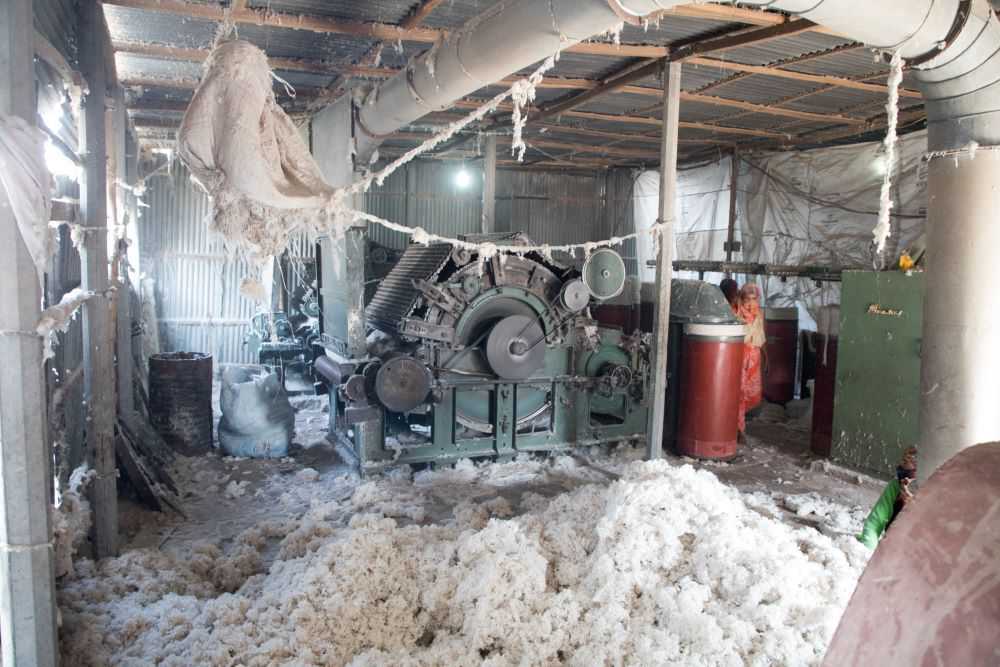Apparel Brands Shouldn’t Confuse ‘Nearshoring’ with Ethical Production

Image collected
A common cry we hear in global textile supply chains is that near-shoring is a more sustainable, and perhaps ethical, option for apparel brands. In the past couple of years, we have seen evidence—albeit limited—of this, with President Trump talking about bringing manufacturing home, and efforts by the U.K. to redevelop its once burgeoning textile industry.
In theory, near-shoring is more sustainable for a couple of reasons. First, its cuts down on CO2 emissions associated with the international transport of textiles and clothing. Second, there is a train of thought (that is far from proven) that local production equals ethical production.
The first of these arguments is difficult to dispute. If something is made in the U.S. and sold in the U.S., the greenhouse gas emissions associated with transportation clearly will be smaller than if it were made in Asia and transported to the U.S.
The second argument is less clear cut. There are tens of thousands of apparel factories across the world, and while some are ethical, treat their staff well, and pay a fair wage, many, as we are all aware, are not.
But the point is that the whereabouts of these factories is random. Asian apparel sourcing hubs do not have a monopoly on poor worker rights. There are good and bad factories in Bangladesh and, indeed, in other sourcing hubs such as China and Vietnam. But there are also good and bad factories in the U.K., in the U.S. and in Eastern Europe.
The one common denominator with all of these factories—wherever they are based in the world—is that they face downward pressure on prices from apparel brands. This means there is, in turn, downward pressure on wages for factory workers. This is not a well-paid industry, wherever you operate in the world, and that’s just basic economics.
But there is another, perhaps more important factor, to consider in the discussion around near-sourcing. As intimated, there is often an assumption that closer to home equates to “more sustainable.” But what if production techniques in textile supply chains in Asia are better than those in the West? What if they are cleaner, use less water, reduce chemical consumption and create less waste? Actually, textile production techniques are something we all need to consider in the debate about where apparel is made. Brands, policy makers and economists all need to be part of this discussion.
As a factory owner myself, I can attest to the huge strides made in apparel production in recent years. The industry in Bangladesh is undergoing a minor revolution. In denim production, for instance, new techniques are being introduced that use far less water than previously was the case, while factories are also becoming much smarter on the issue of water recycling and harvesting rainwater.
Wastewater, meanwhile, is managed far better, often cleaned using expensive effluent treatment technology so it can be used again and again. This is an ongoing pattern of continuous improvement, and many factories are in the process of a serious industrial upgrade in this area.
New chemicals and processes often create a net result, meaning fewer chemicals are used in clothing production, and the chemicals that are involved in manufacturing are carefully scrutinized to ensure they are not harmful to humans. Coming to grips with this issue has taken years and has been helped enormously by the Zero Discharge of Hazardous Chemicals, which has helped to foster best practice across supply chains.
In the case of Bangladesh, we can also factor in that the industry has undergone a huge safety overhaul. Garment factories Bangladesh are cleaner, safer, more efficient and more sustainable than at any time in history, and that’s no exaggeration. Billions of dollars have been spent in a process of industrial and technological upgrading that continues in all garment production hubs in Asia as they battle to win and maintain the business of international brands.
How ironic, then, that having reached this current state, there is talk of taking garment production going “back home,” as part of a pattern of near-shoring.
In actual fact, there is not a great deal of evidence that near-shoring is happening. The statistics suggest some production has left China for the U.S. or countries nearby but the picture is very mixed. If anything, production and output in the likes of Bangladesh is actually continuing to increase; the country has had a fantastic 12 months in terms of export revenues.
Why is this? A personal hunch is that near-shoring is little more than a political slogan for the time being. Brands are demanding their Asian apparel suppliers produce smarter, faster and cleaner. In short, brands need Asian suppliers to produce more sustainably. This has not happened overnight, and it has been a major and hugely expensive learning process for all involved.
There is now a level of sustainability learning and expertise in the Bangladesh’s apparel supply chain that would take years to replicate elsewhere.
Politicians might like to talk about near-shoring, but for brands, it is action, and not rhetorics that counts when it comes to purchasing sustainably. And on this front, for now at least, Bangladesh’s RMG sector holds the trump cards.
Source: https://sourcingjournal.com
Previous Story
- Supply chain actors connected at GOTS Bangladesh seminar
- Bicester Village to host The Modist's first European...
- ‘Banai’ to the next round in Hult Prize
- Facial Recognition and the Fight for Diversity
- World travel: 8 unforgettable destinations
- Travel insurance ‘will not cover’ cancelled Sri Lanka...
- UK high commissioner: Bangladesh a developing giant on...
- How big tobacco keeps cancer rates high in...